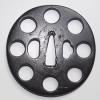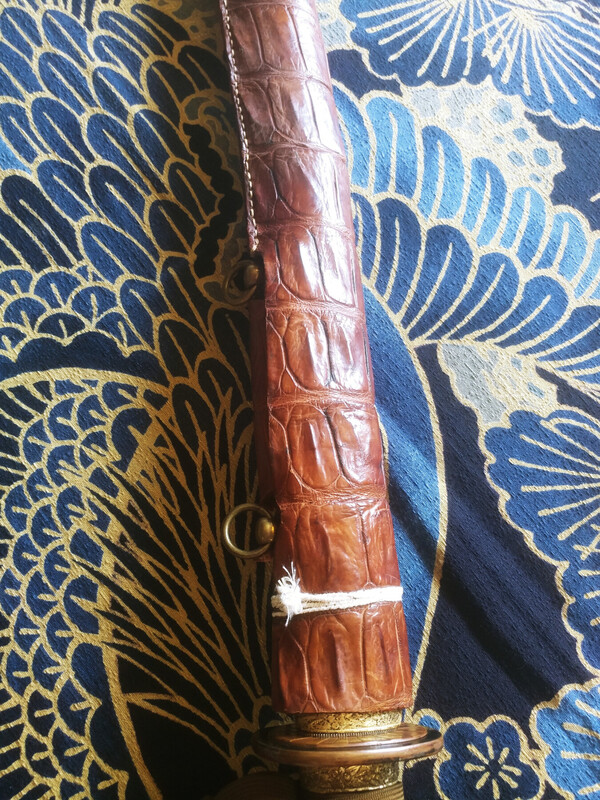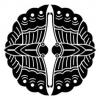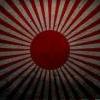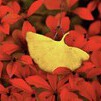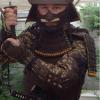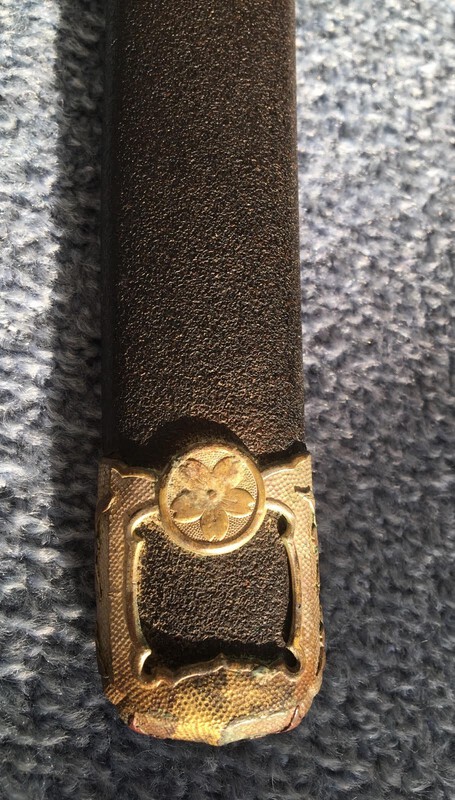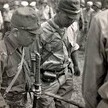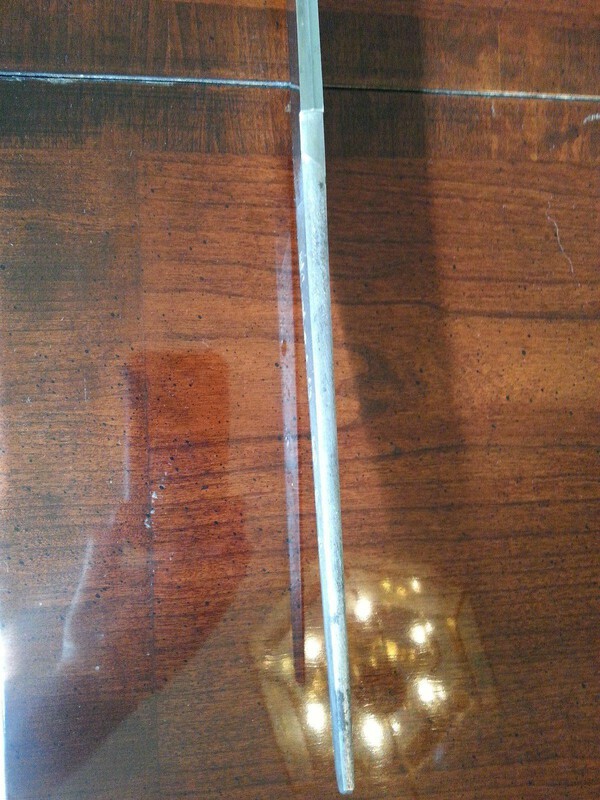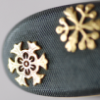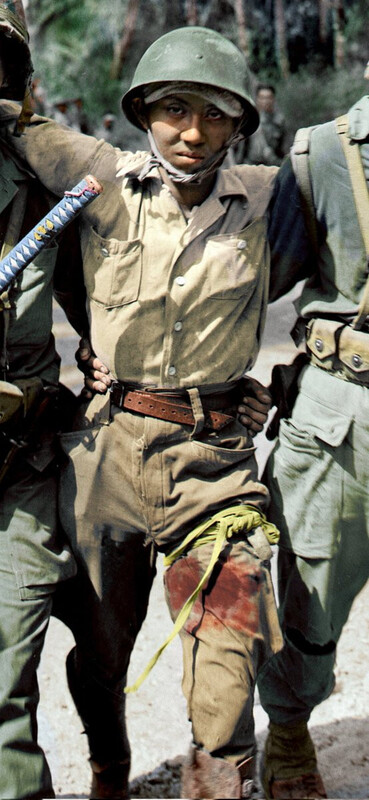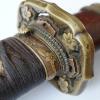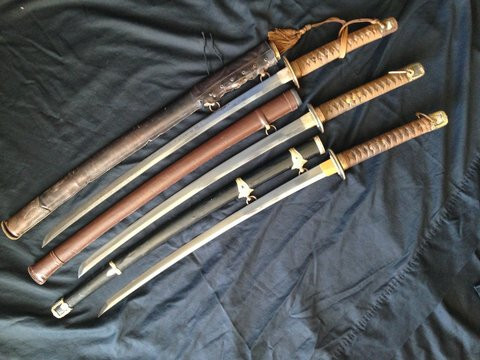Leaderboard
Popular Content
Showing content with the highest reputation on 01/30/2022 in all areas
-
Well I was having bit boring time in a fever, and I won an auction in Japan for a book about swords of the collection of Kurokawa Institute, as they have some amazing items. So an idea came to me that what if I look on some of the most impressive museum collections in Japan and gather that info in a thread. As I have already collected this data actually scooping it together was pretty fast and fun. Here are some absolute top museum collections in Japan, in no particular order. I will mostly list the number of Kokuhō (National Treasure) Jūyō Bunkazai (Important Cultural Property) and Jūyō Bijutsuhin (Important Art Object) swords in the collection. Many of these museums feature amazing items that do not have official designations, and also many have multiple NBTHK designated items. Tōkyō National Museum - https://www.tnm.jp/ Of course it does not need introductions, collection features 19 Kokuhō, 56 JūBu and 6 JūBi. Kyōto National Museum - https://www.kyohaku.go.jp/eng/index.html Similar to above not too much info needed, collection features 3 Kokuhō, 25 JūBu and 2 JūBi. NBTHK - https://www.touken.or.jp/museum/about/collection.html The Japanese Sword Museum houses an amazing collection of items. NBTHK is well known for their appraisal papers. The museum collection includes 3 Kokuhō, 13 JūBu and 13 JūBi, and also several Tokubetsu Jūyō swords. Tokugawa Art Museum - https://www.tokugawa-art-museum.jp/en/about/treasures/sword/ Museum houses over 10,000 artifacts that have been collected by Owari Tokugawa Family. Collection includes 7 Kokuhō, 19 JūBu and 21 JūBi. Sano Art Museum - https://www.sanobi.or.jp/bijutsukan/collection/japanese_sword.html Established by Sano Ryūichi in 1966. I think many know their famous exhibitions and amazing books published on them. Collection includes 2 Kokuhō, 8 JūBu and 36 JūBi also several Tokubetsu Jūyō in collection. Seikado Bunko Art Museum - http://www.seikado.or.jp/en/ Seikado Bunko Library and Art Museum houses Iwasaki family (founder of Mitsubishi group) collection, founder started collecting in 1892. There are 1 Kokuhō, 8 JūBu and 23 JūBi swords in the collection. Eisei Bunko Museum - https://www.eiseibunko.com/index.html Houses the collection of Hosokawa family, public museum was opened in 1973. Collection features 4 Kokuhō, 1 JūBu and 1 JūBi. Kurokawa Insitute of Ancient Cultures - http://www.kurokawa-institute.or.jp/ Research institute established by Kurokawa Family. Collection features 2 Kokuhō, 9 JūBu and 30 JūBi swords. Tōken World - https://www.touken-world.jp/ This newly established museum in Nagoya has acquired stunning collection of items in fairly short time span. Museum was opened in 2020. The collection has 1 Kokuhō, 10 JūBu, 41 JūBi and 58 Tokubetsu Jūyō swords. Japan Sword Museum Technology Research Foundation - http://www.nihontou.or.jp/collection.html This foundation was established in 2015. The collection includes 2 Kokuhō, 20 JūBu, 11 JūBi and 11 Tokubetsu Jūyō swords. Of course there are lots of other amazing museums in Japan that feature excellent swords and related items. And I did not include any shrines and temples in this list (some of them have spectacular items), as I might do a followup list on some of those. The current location of Kokuhō and Jūyō Bunkazai items can be tracked in here: https://kunishitei.bunka.go.jp/bsys/index as I believe their ownership is required to be informed. For Bijutsuhin items tracking down them is lot more trickier but for them I used the historical info that was on the 80's book series that featured every Bijutsuhin sword, as well as more modern info acquired from several Japanese books and magazines. Of course for the bottom 2 new collections it was easy as they list the items they have. They have acquired lot of Bijutsuhin from previously owned privately and other museums. I would also think that after some older owners have passed away some Jūyō Bijutsuhin swords (and Tokujū etc.) would have been donated to Tokyo & Kyoto National Museums, as well as NBTHK and other museums as well. I hope this might be interesting to at least some people. :D5 points
-
4 points
-
4 points
-
3 points
-
Bit hard to tell, but I'm with Stephen and Chris. I think it looks like a Type 98.3 points
-
Have changed the way pics load, will use more resources but may load a bit quicker. I think the fact that people are uploading huge image files directly from cellphones is causing our issues. I am guessing I cannot allow free and huge image hosting forever. We are well over 600,000 files. Most forums encourage imgur or external hosting. I may need to consider limits some how. It also slows down things at peak times. I'll check with the hosts and see what is the best way forward.3 points
-
Vittorio, depends on your collecting objectives and the price. It is a good swordsmith, it is a traditionally made sword, but as outlined by others has some issues with polish, and probable acid treatment. In my opinion, buying it because it is a star stamp, is akin to buying a sword for the signature and not the blade, that is if you are buying it for a quality blade. BUT, if you are interested in it as a piece MILITARIA, the mounts are nice, and putting aside the issues with the polish, and if the price is right, it is a reasonable starting point for collecting Gendai-to, provided you are not looking for perfection. Your tastes will change with knowledge and experience.3 points
-
I think it's pointless trying to convince someone like @Barrett Hiebert that he should or should not do something. We should wish him well and since his glass is full we should probably let him learn in his own way. At the end i also feel he enjoys provoking the collecting and martial arts community to get satisfaction from disarray, this is also known as narcissistic tendency. These people exist everywhere and we cannot change them.2 points
-
As Paz mentioned James Williams: The katana is not exceptional among swords as a battlefield weapon or dueling weapon. It excels at the draw cut, which is what Iaido is built around and is demonstrated in the above video. Cutting things with an already unsheathed sword is not generally dangerous to the one with the sword, but you can easily split your saya and permeantly disable your hand on a poorly executed draw cut. If you want to practice draw cutting, you should learn Iaido. If you don't intend to do so, why not just use a machete or an axe?2 points
-
I know of several swords of this style that came from the Netherlands East-Indies that are in Australian, Indonesian, and Dutch collections. It must have been a popular style to imitate during the war years. There are plenty of accounts of Indonesians carrying Japanese style swords after the war. These young officers were trained by the Japanese Army and the sword carried the same meaning to them. It was a badge of rank and authority. Below is a link to just one of the swords I have recorded. This one is coming via Indonesia. My Katana Sword From Pembela Tanah Air/PETA army veteran WW2 in details2 points
-
THIS… training in a martial art (especially one with large sharp blades) without being under the watchful eye of a qualified and dedicated instructor can be dangerous… to you, those around you, and the blade. EDIT: I just found the other thread. My comments won’t help… it’s not what you want to hear. I’ll stop.2 points
-
From David Thatchers Facebook page I'm very happy to have been awarded the rank of Gusoku-shi by the Miura Anjin Kobo in Japan. This is the highest recognition rank that can be achieved for an assembler or restorer of Japanese armour. To receive this from Miura kobo is incredible. To have my body of work finally recognised in Japan is heartwarming. We are so lucky to have quite a few worlds renowned Nihonto restorers in the UK Trouble is the long waiting list to have anything restored! You have to take the rough with the smooth2 points
-
Dear Paz. The two books you already have will give you a good general picture of the field, The Encyclopedia is exactly what it says it is, an extensive list of the trems used and their definitions. It is a very useful book to have but if you are looking for some deeper dives in tot he overll feild of learning then The Conoisseurs Book of Japanes Swords, Kokan Nagayama might be more useful to you. I am very sure that others will add to this list for you, be prepared to build a library. All the best.2 points
-
2 points
-
2 points
-
And this is one of them. Vittorio, Many owners are quite proud to own a star-stamped blade in beat-up condition, scratched, used, and abused in the field. Yours is in far better condition that any of that. Don't be bothered by the opinions of the polish. It is still quite beautiful. A star-stamped RJT blades is Nihonto. And this is a nice one.2 points
-
Toughen your skin is not a piece of crap don't let other assholes sway your opinion2 points
-
2 points
-
I dont see NCO in first photo.. blackened fittings with the leather strap instead of push button latch. String wrap ito. But we all know I'm blind. 😐2 points
-
2 points
-
This was just posted by Andrew Ickeringill ( @Andrew Ickeringill ) on Facebook, and I thought it was worth posting here, and pinning for the future. Andrew is a FULLY trained traditional polisher and one of the most qualified to make these statements. Before bringing up the subject on this forum, and risking a storm of fire, please read this and take it to heart. Amateur sword polishers… I know you probably won’t listen, but I’ll try anyway. Recently, I’ve been seeing more and more rubbish from amateur polishers on the internet, it’s not a new problem, but with social media being what it is, amateurs have been given a platform where they can prosper. It’s beyond frustrating, it’s infuriating, and it's working directly against what I'm striving for, the preservation of Nihonto. I’ve had to correct the damage caused by amateur polishers many times, and the damage is always severe. Correcting these hack-jobs takes a lot of work, and it means removing more steel than would’ve otherwise been necessary if the blade had previously gone to a traditionally-trained togishi. A traditional apprenticeship in togi takes years to complete for a reason, THERE’S A LOT TO LEARN! It means giving up everything else to spend your time in servitude to Nihonto. My apprenticeship was 12 hours a day / 7 days a week / for over 6 years, and even my spare time (what little I had) was usually spent studying nihonto. But if you want to be a togishi, this is the way it must be, you have to go all in. Through arrogance or ignorance or both, amateur polishers have completely forgone this necessary training. Some of them may have attended seminars in Japan, or visited a togishi for a few days… but this obviously doesn’t equate to traditional training. And for many amateurs, the bulk of their training consists of reading books and watching youtube videos of swords being ruined without a clue. Unfortunately, these videos receive plenty of misguided encouragement from those who don’t know any better… “wow, so shiny!”. Amateurs will often argue… “this sword isn’t worth sending to a pro, should we just leave it to rust?”… but how would THEY know? They haven’t been trained in kantei, they have no idea if a sword is worth a professional restoration or not. A cold chill passes up my spine every time I think about this, how many great swords have been ruined by amateurs? I know I’ve already seen a few in my time. If you’re an amateur polisher reading this, let me give you a tip… this job is not for you. This isn’t something that should be attempted by anyone but a traditionally trained togishi, and if you haven’t realised this fact by now, then you need to develop more respect for Nihonto and the craftsmen who have worked their butts off to complete the proper training. Please stop scraping the life away from these works of art, you’re doing far more damage than repair… this job is not for you!1 point
-
1 point
-
You are a beginner in "JSA " martial arts which involves tameishigiri. Sorry to say. You are a beginner in Japanese swordsmanship. European sword arts is not the same. I cannot understand why you would want to cutt with a nihonto. In nearly ten years of budo I've never ever come across even the most novice anime type enthusiast who dreamt cutting with an antique blade over thousand dollars. We live in a world where we are soo lucky to have quality cutting tools like modern production blades. Even sensei james Williams who does alot of tameishigiri uses a modern blade such as a bugei or hanwei . I've never seen him cutt with expensive nihonto. Sensei tamesubro also cuts with a tori xl from hanwei. These swords are made for dojo cutting. Yes nihontos are used in dojos in Japan under the guidance of very experienced teachers. Let me break it to you as a martial artist. Cutting with a nihonto in your backyard will give you no satisfaction what so ever. It will not give you any feel or idea of being "samurai". You will not appreciate any of it. But you have money to burn go ahead. I find you very disrespectful to our art and the art of preservation. Sorry for the rant.1 point
-
Thank you Tony. I track it and call parcelforce as soon as it arrives in the UK. And its cleared by customs.1 point
-
Lucky, One looks like a IAIDO TSUBA (lower right). The plain one with the golden KIRI MON looks nice to me. Plural of TSUBA is TSUBA: Japanese nouns don't have a plural form.1 point
-
1 point
-
For those sayas with leather combat covers for the Type 97, is the actual saya usually a plain wood, or is black lacquer finish more common? And, except for the double Ashi earlier version, how would a single Ashi leather-covered Navy saya differ from that of leather-covered Army saya? Would a black lacquer finish determine the difference? Would there be any discernible difference?1 point
-
I have not studied the kaigunto in depth, but in my casual exposure to the type, the single haikan (ashi) starts appearing toward the end of the war, so "older" simply means earlier in the war. The uniform regs were changed in the last year of the war to allow for single haikan and looser specifications to detail. Even non-guilded fittings were specified. I have seen pierced tsuba for a leather retention strap, but it is uncommon in my memory.1 point
-
1 point
-
1 point
-
Goodness! That's a bit of a shock but keep your eyes open, often the silly prices can be beaten by a sneaky scan of the obvious sites. I don't yet have a copy of this one but I think it will be very good, Study of Japanese Swords: Chronological Study of Japanese Swords and Japanese History Paperback – 13 July 2021. It's about 30 quid on Amazon. by Yurie Endo Halchak (Author) Check out the author and her very good website here, All the best.1 point
-
1 point
-
1 point
-
1 point
-
Can't find a thread dedicated to talking specifically about kaigunto fittings, so if @Kolekt-To doesn't mind, I'll start using this one a general reference thread for the topic. I know Nick Komiya made a post showing the leather saya covers for kaigunto were to be black or blackened, but I don't have that reference. If any Truly Gifted searchers, @Kiipu comes to mind, could dig that out and post here, I'd appreciate it. Otherwise, I can spend the next several years digging it out, and I'll update here! I mention this because I just came across this photo showing some kaigunto, a couple of them leather covered. One is dark, as expected, the other looks to be natural leather color. I appreciate this photo because I have a Navy takayama-to with a brown leather cover. It's always bothered me, as I've wondered if it were original or post-war made. This photo shows that the natural colored covers were in use by navy officers.1 point
-
1 point
-
緑山 - Rokuzan/Ryokuzan (if it is an art name), Midoriyama (if it is a family name)1 point
-
1 point
-
Bruce, I believe that that mark was made from rubbing of a habaki/seppa/tsuba that were placed there when the sword was longer.1 point
-
1 point
-
Seems to be a trend recently Bruce. A high "Buy it now" price along with a "Make offer." Dave M.1 point
-
I've always like the longer kissaki look. It's also interesting to see a clear effort by the smith to keep cranking out quality work that late in the war (Feb '45). We see so much "late-war" poor quality blades, and yet here was a guy still putting his all into his work. Love it. Can't tell from the photo, is that a double latch button, or a single?1 point
-
it looks like the shinogi has been rounded and the yokote is gone. Unless this is dirt cheap, I would pass. Sooner or later, when you realise what a decently polished sword looks like, you will become frustrated with it. Kanehisa is a good smith. However, this really does need a professional polish, which even in America would cost a couple of K. I would consider, is the sword worth the cost of the restoration? If not I would definitely pass.1 point
-
Great Stuff! Thanks for posting Johnny. At first glance, the sword that 'Wesley Snipes' dad has does look like a type95, but i'm not too sure on the tsuba just yet. (i had no idea that Wesley was Indonesian!!) I did a search on 'Sardjono Colorisation' and found lots of other photos from the period. Here's one titled "A captured Indonesian company commander stripped of his sword. Plumbungan, Sidoarjo, East Java, Indonesia. August 1946." Originally a Black and White photo, colourised by the same fellow. (Not sure the ito wrap is the correct colour- one of the problems we have with re-touched photo's i guess) This one looks a bit like a civilian sword(not gunto), but would most likely be a local made item for the local forces under the Japanese Rule. I'd be interested to see what other opinions we have here, any thoughts?1 point
-
Greg, a little info about yourself will also help NMB members decide to make a purchase. Welcome aboard.1 point
-
1 point
-
Hi Bruno, I have a tsuba inscribed (I never say signed as too many gimei) Akiyoshi. It is a shakudo nanako tsuba with a simple decoration. The signature on yours and mine look similar, but photo is too blurred to see clearly. My research is as follows: Akiyoshi does not appear in any of my reference books but may be attached to the Kono School in Edo during the 19th C. Markus Sesko’s genealogy charts (p. 43) show that Kono Haruaki (1787-1857) had 12 students who used the same ‘Aki’ kanji as the first character of their names. Akitatsu, a student of Haruaki, in turn had a student named Tasuyoshi of the Kobayashi family. Akiyoshi may be an unlisted member of this school, or may have changed one or more kanji in his name during his career, as Japanese artisans often did. Another reference (The Japanese Toso-kinko Schools, translated by Markus Sesko) lists Akiyoshi (civilian name Tanaka Bunjiro) as a student of Kono Haruaki. An entry in ‘The Early Famed Works of the Kyoto Smiths (Kyomono no Ko-Meisaku)’, tanslated by Gordon Robson lists a tsuba by Akiyoshi with a shakudo ground. The text states that ‘Akiyoshi is among the skilled kinko of the Aizu during the late Edo priod’ ‘There must be some connection with Kawano Haruaki, and because of his signature and kao, we can agree to such a conjecture.’ There appears to be a similarity between the kao on this tsuba and examples attributed to Kono Haruaki, so it looks like the artisan of this tsuba is probably the one referred to. Best regards, John1 point
-
1 point
-
1 point
-
1 point





